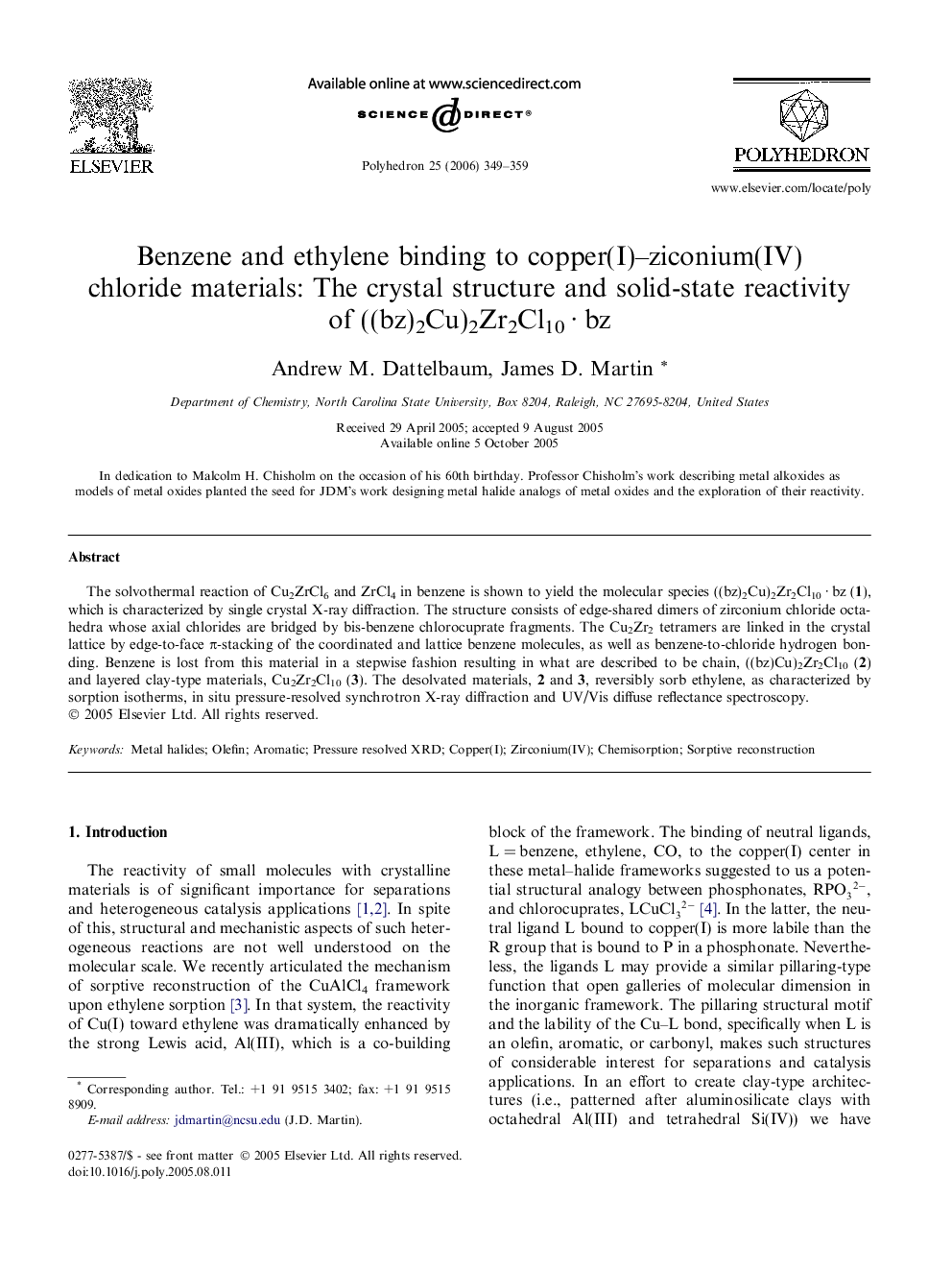| Article ID | Journal | Published Year | Pages | File Type |
|---|---|---|---|---|
| 1341015 | Polyhedron | 2006 | 11 Pages |
The solvothermal reaction of Cu2ZrCl6 and ZrCl4 in benzene is shown to yield the molecular species ((bz)2Cu)2Zr2Cl10 · bz (1), which is characterized by single crystal X-ray diffraction. The structure consists of edge-shared dimers of zirconium chloride octahedra whose axial chlorides are bridged by bis-benzene chlorocuprate fragments. The Cu2Zr2 tetramers are linked in the crystal lattice by edge-to-face π-stacking of the coordinated and lattice benzene molecules, as well as benzene-to-chloride hydrogen bonding. Benzene is lost from this material in a stepwise fashion resulting in what are described to be chain, ((bz)Cu)2Zr2Cl10 (2) and layered clay-type materials, Cu2Zr2Cl10 (3). The desolvated materials, 2 and 3, reversibly sorb ethylene, as characterized by sorption isotherms, in situ pressure-resolved synchrotron X-ray diffraction and UV/Vis diffuse reflectance spectroscopy.
Graphical abstract((bz)2Cu)2Zr2Cl10 · bz (1) was synthesized by solvothermal methods. The title compound looses benzene in a stepwise fashion to yield ((bz)Cu)2Zr2Cl10 (2) which exhibits brilliant luminescence from a metal-to-ligand charge transfer state, and Cu2Zr2Cl10 (3) proposed to have a clay-type structure. Both 2 and 3 reversibly sorb ethylene at modest pressure.Figure optionsDownload full-size imageDownload as PowerPoint slide
